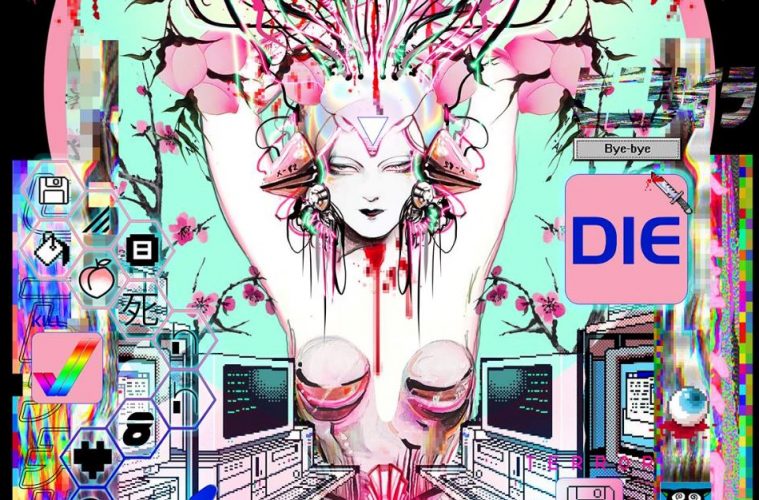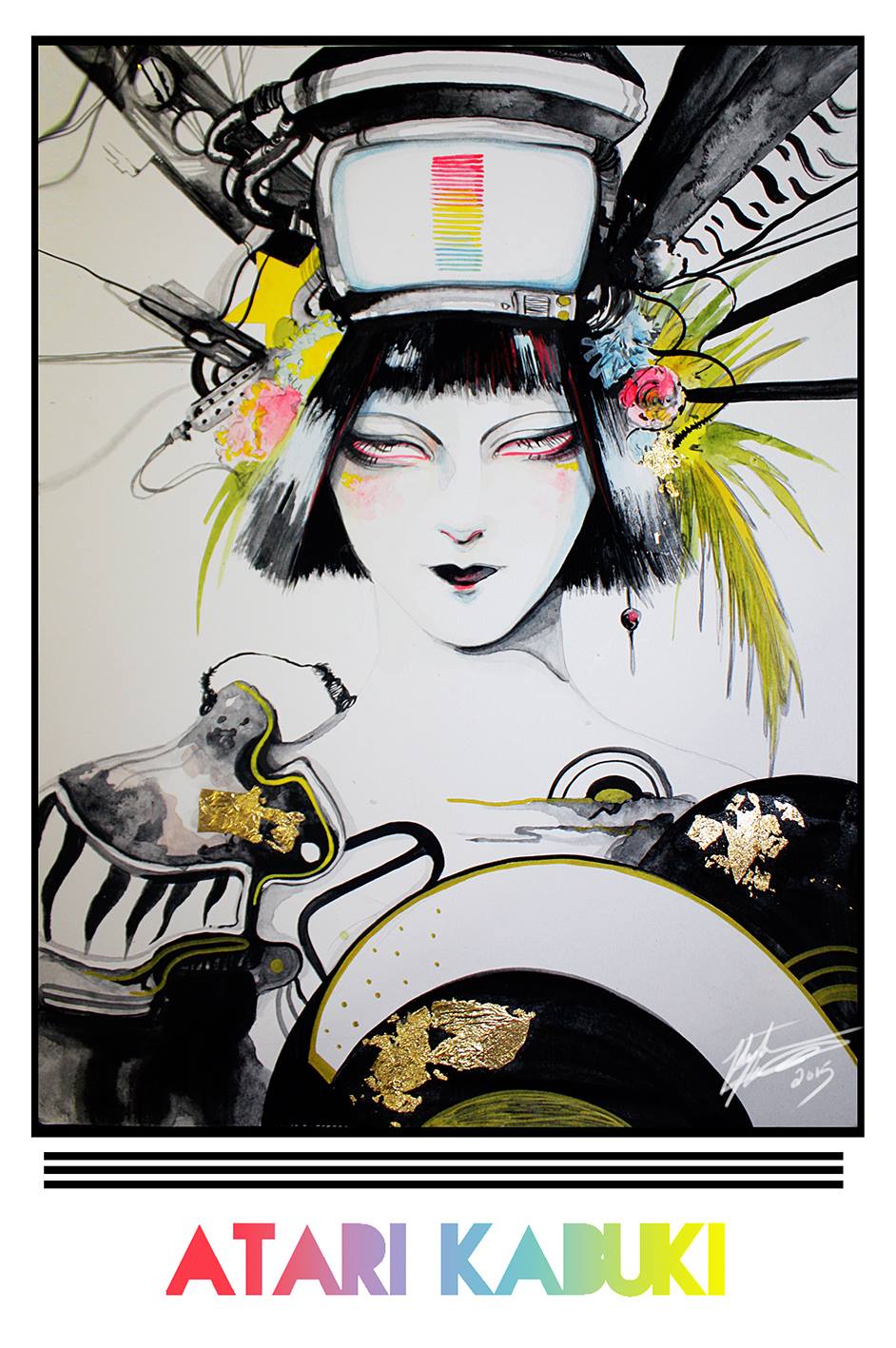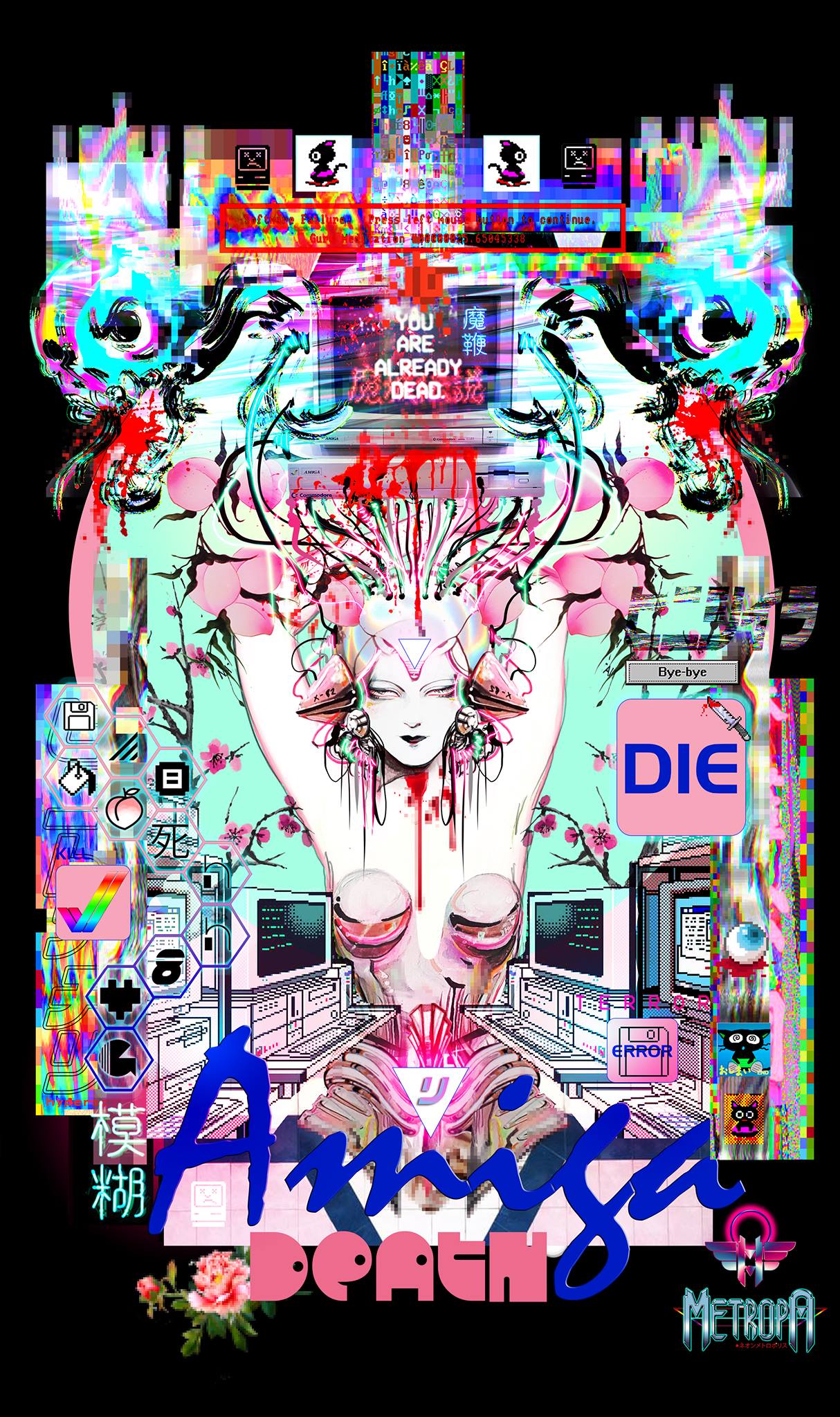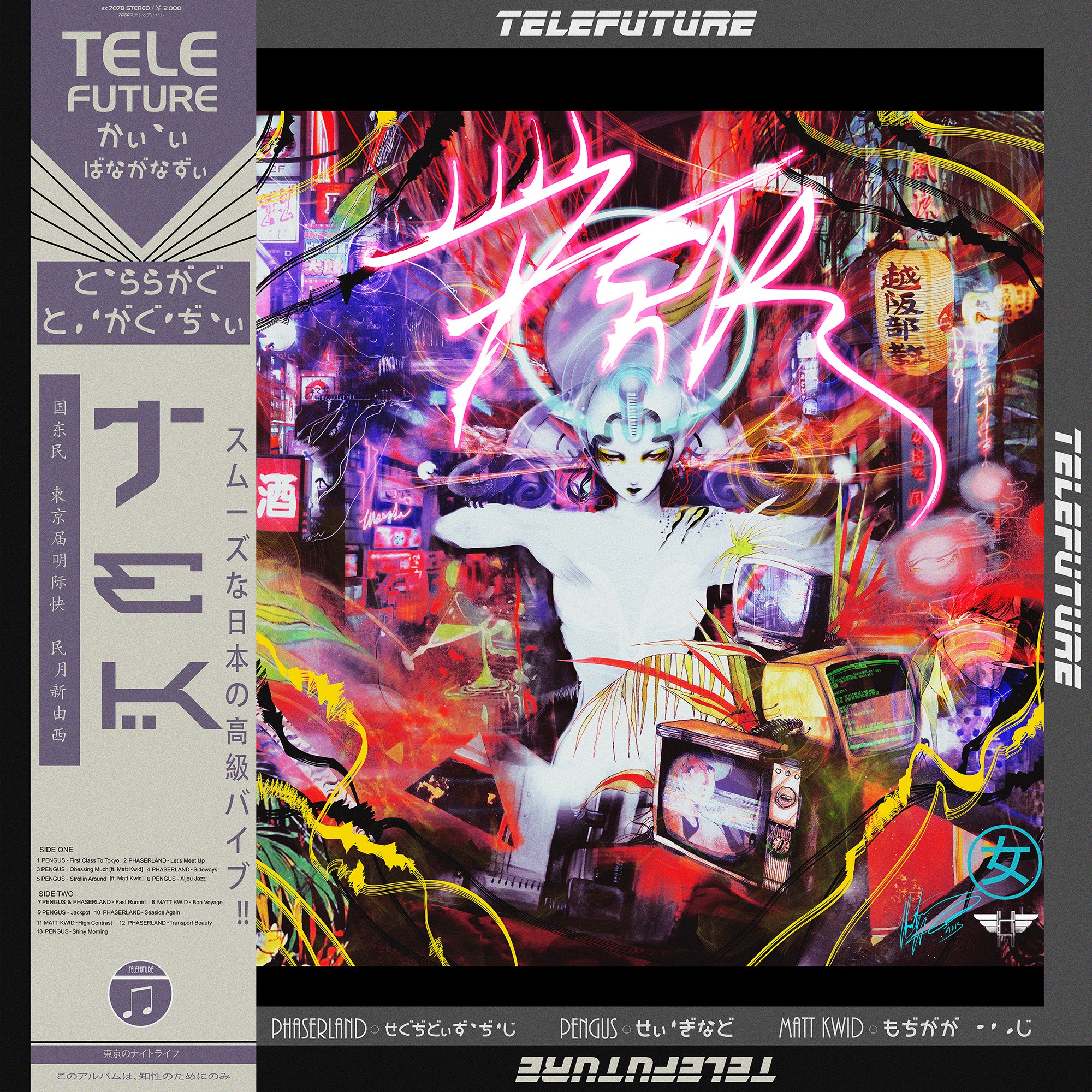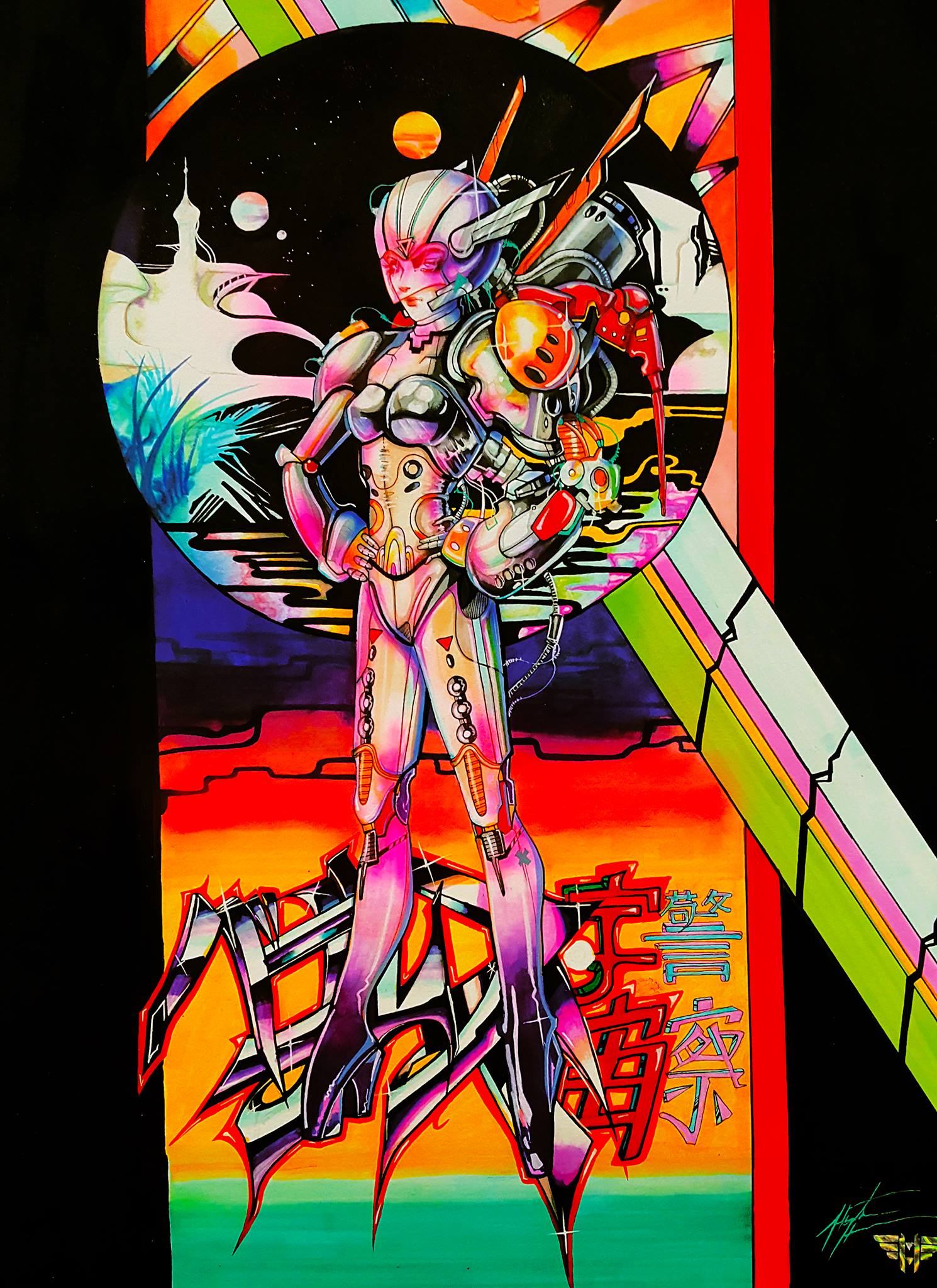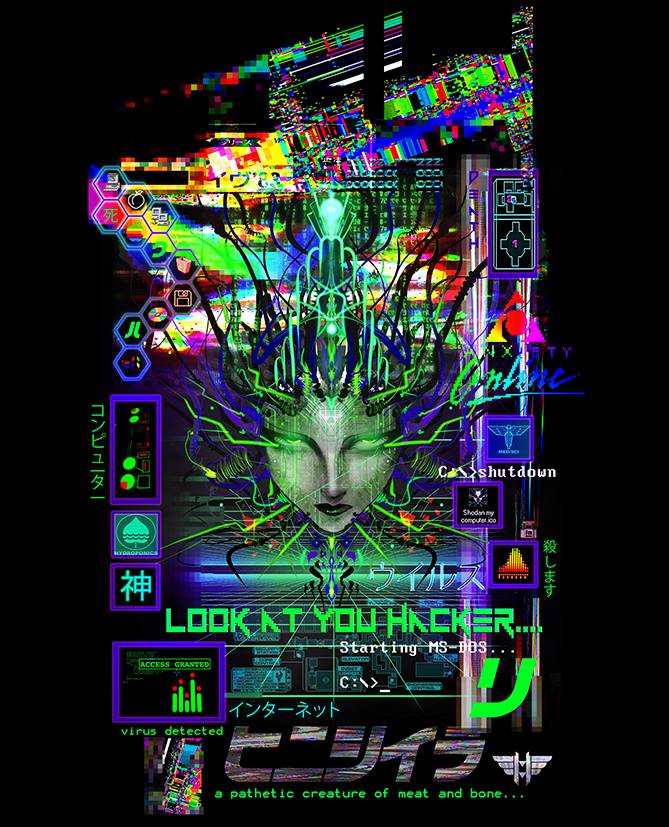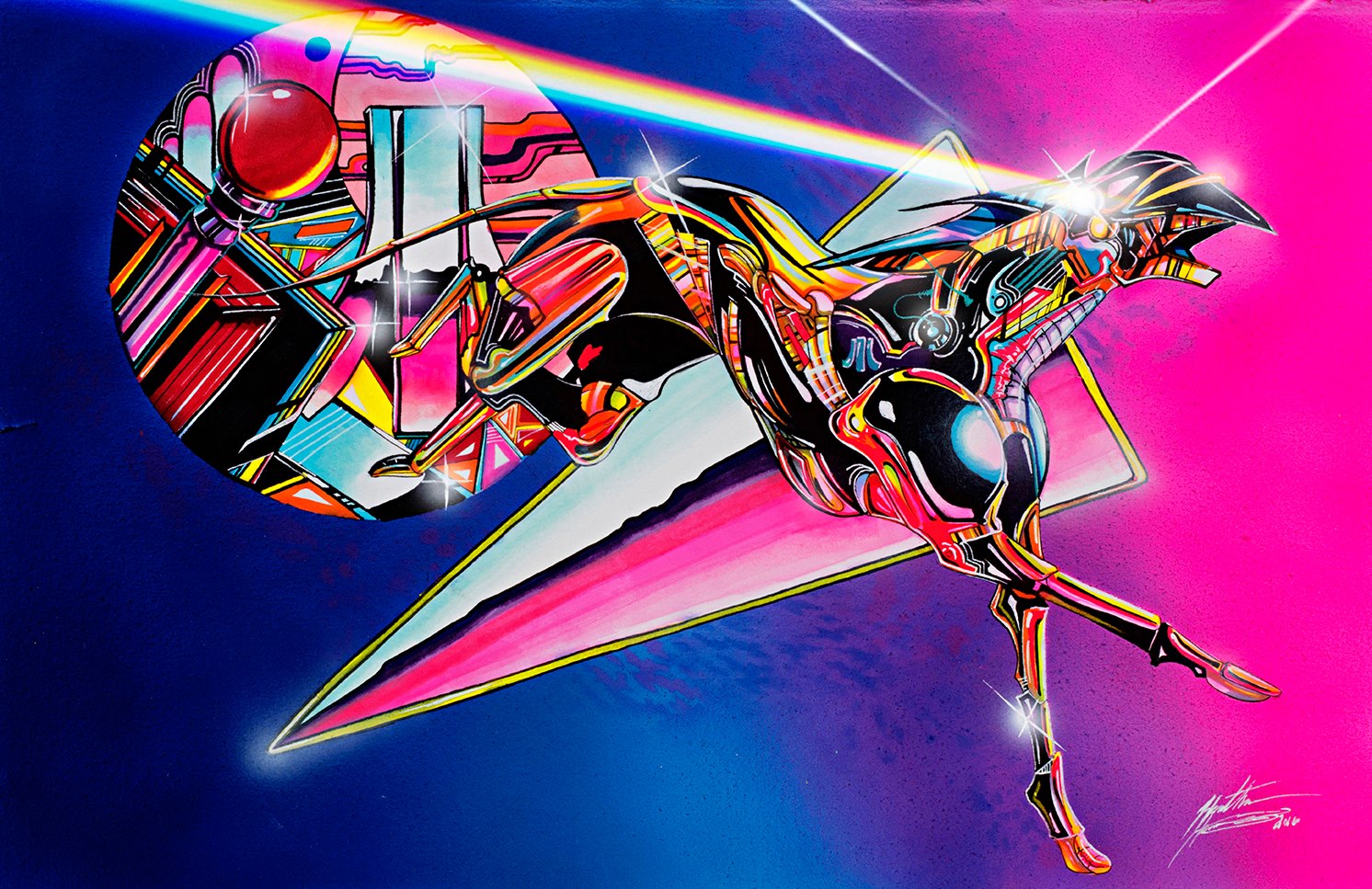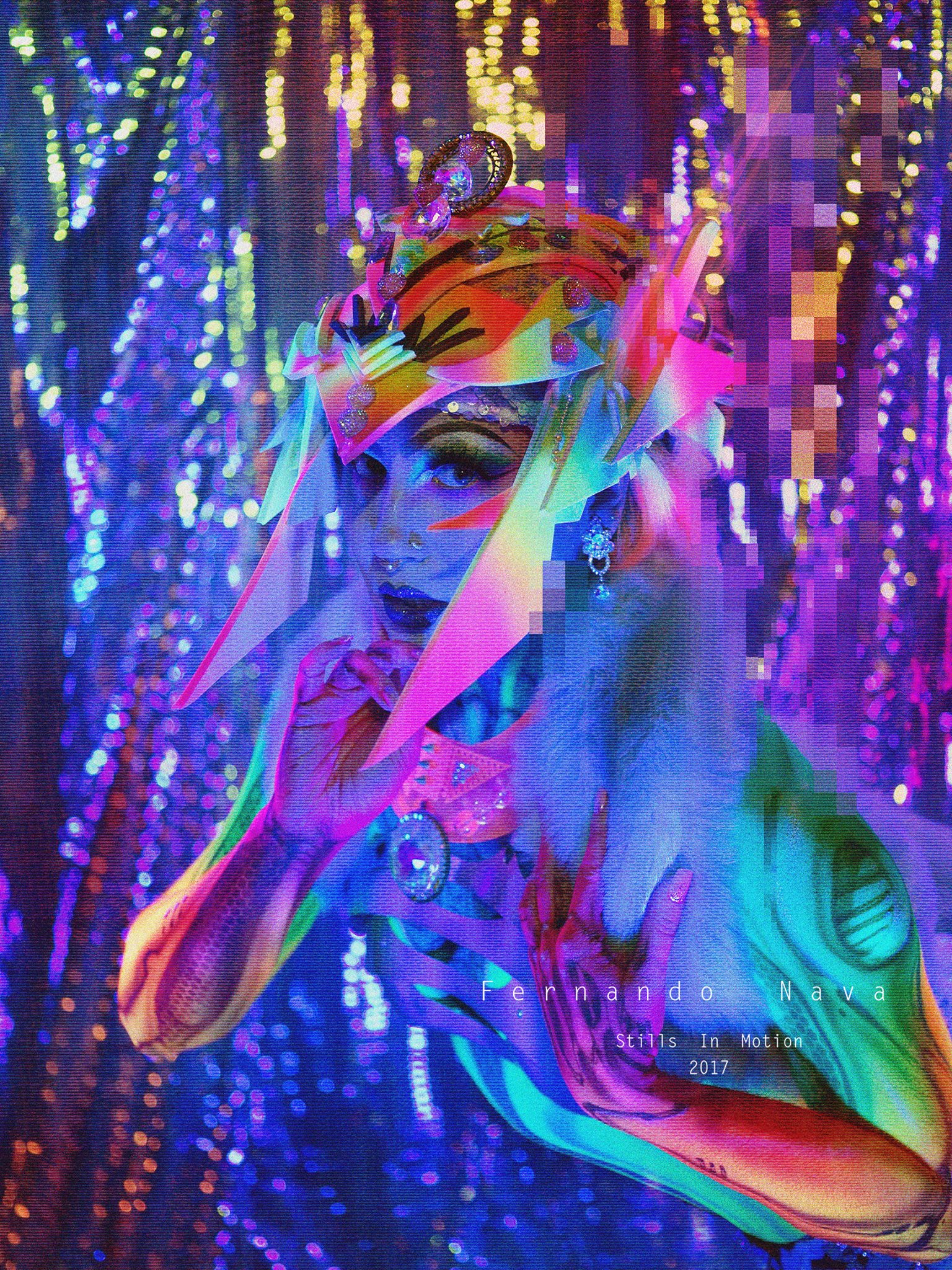What does the future look like? It’s something we’ve been wondering about since Leonardo da Vinci started sketching out flying machines and other contraptions that were far from possible in 1400’s Italy. Later, Mary Shelley created what we can call science fiction, and many writers and artists have since ran with it, creating stunning worlds and amazing imagery that captivates and enthralls.
In modern times, where we really are living in a future of space travel and robots and limitless information we often find ourselves nostalgic for what the future used to look like. For instance, Vaporwave was a recent musical phenomenon that took retro corporate culture and classic music and fused them into the most interesting new form of musical art in recent memory. Its younger, perhaps more interesting brother Sythwave takes that fond affection for 80’s retro a step further, embracing the digital future purity and white hot cool of the 80’s and fuses it into a feast for the eyes and ears, with all manner of musicians, designers, and artists contributing to the movement across the internet and ultimately on the dancefloor.
It was while I was perusing through a Synthwave fan group on Facebook that I found myself stunned by what the future has brought us. In case you are wondering, this is what stopped me in my tracks:
Yeah, after wiping up what was left of my melted eyeballs off my keyboard I simply had to figure out who this “Heather Hermann” is and how the hell she came up with the white hot cyberpunk fueled majesty that is Empress Of Tiamut.
After a few quick internet searches I found out that, yes, she is a person made of flesh and bone. Also, yes, she is super, and like any great artist doesn’t just make amazing painters. She is a performer too and is currently making some of her own art real while chilling out in lovely loss Las Vegas.
But that is enough of me rambling. Heather was gracious enough to accept an interview with AAGG, and what follows is a trip inside the mind of this Technicolor nostalgia that is quite unlike any other.
Please enjoy the interview, and amazing art, that follows.
Heather Herman: A difficult question as the first time I ever picked up a marker by the age of 6 months I was hooked on drawing. Being an artist chose me. However, I decided to pursue it professionally my sophomore year of high school. I knew when I sold my first large scale painting for 10 grand at age 18 that this was my path.
HH: I’ve pretty much had a pencil in my hand since about 6 months old. My first drawing I ever did was trying to replicate the little stick birds I saw on Sesame Street. In my younger years, I would draw HUNDREDS of images every week. I was just a machine. I was always drawing when I was professionally dancing or being stuck in rehearsals. I worked with the Kravenko Ballet which was a USA branch of the Royal Academy of London. So it was pretty much school and that. Art honestly was my ultimate escape and mental masturbation away from all the craziness where I could just be me and collectively take my mind somewhere else…even for just a few seconds. I was a notorious homework scribbler. I’d hand in math homework with entire comic strips all around the sides! I progressively had been studying masters like Amano, Erte, and Mucha at a very young age. Around six years old. My brother had a video game guide slip for Final Fantasy 2 and I practiced every day to replicate the artwork. I was studying color theory and raw shapes at an advanced level. I learned to draw like Amano before I stepped foot into high school at the Las Vegas Academy. My work was so different and unique I was immediately accepted after my audition. (It’s an arts high school and auditions were mandatory at the time). From there I learned hyper-realism and just about every other media and style and had already had an educated background in Photoshop and Corel Painter. My boyfriend and I are actually sponsored by Corel Painter now and do a lot of tech development for them alongside Intel. I actually TAUGHT digital art in high school at sixteen back in 2004 because no one else knew how nor was it taught in high school. I used to take my photo major hour to teach a class to 30 students on using Wacom tablets, calibrations, and speed concept design. I decided to pass on art college even though I was given a full ride to Cooper Union. Art College is one of those things that can make or break you but mostly break you. I find that with certain amounts of “influence” it destroys creativity/originality. I think art college is great if you want to talk about your “society driven” pile of colored rocks smooshed in a corner as a progressive installation. I was better off interning and drawing for myself and letting it build rather than have a professor fill me with false public ideals. The ideas of Steampunk, Synth and Vaporwave style were already in my work avidly before there were ever scenes dedicated to it. When I left high school though I was lucky enough to intern with a 25-year costume design veteran who was Bob Mackie’s assistant here in Vegas during the 80’s. As much as the Synth community goes on about “Synth fashion”, they haven’t the faintest clue about stage fashion/costume from the era and the gaudy over decorated show spectacles that made stage entertainment so magical during the 80’s with such shows as Jubilee, Splash, and the Lido.
HH: Usually I start with music. I have to figure out a whole story and feeling before I create something. Everything I do is usually painted to particular songs or albums. Once I figure out which one it is, I think of the mood of the main figure. I like to leave them up to perception. Are they sexy? Do they have any feelings? Do they control how you feel? Or are you just glued to their eyes? I always concentrate on the eyes. Classic bedroom eyes. Seducing you. After the main figure is created I move on and think of the secondary imagery. I’m fascinated by 1930’s dystopian Art Deco ideals and aesthetics so I play heavily off that. There’s a fun eerie quality to everything I do. I try to convey things that I have seen within my visions and dreams in a more conductive manner that will allow the viewer to just “peek” into what I know. I’m fascinated by infectious AI, its control on humankind…and how we rid ourselves of it. My work is the discovery of the self. An alternate subconscious timeline. Making you feel inexplainable emotions and a false sense of nostalgia. That feeling of remembering something that never happened, or longing for a memory that isn’t yours.
HH: Depends on the medium. Usually, my paintings take the longest concerning execution. Airbrush is also very time consuming given I do everything by hand and cut out all my own primary stencils and source artwork. I usually start everything digitally then translate it as my shields for the airbrush. I also use Photoshop, Corel Painter, Mudbox, and Zbrush. I am 100% all PC based. I cannot stand Macin-FAIL. I prefer to customize my machine to handle the power I need for executing large works especially in 3-D modeling so I can print everything smoothly. Currently this year I am getting into sculpting heavily and have a booth at Monsterpalooza with some of the best in the industry for Hollywood concept creature design, so that’s pretty exciting!
HH: First and foremost, Erte is the primary master. Klimt stimulated Art Nouveau whereas Erte was the master and creator of Art Deco. Klimt’s visual style was organized chaos mixed with organic. It was extremely revolutionary for its time. Amano was directly inspired off Kilmt’s work along with Erte. Sorayama works his way into all this too as all of these fine art masters exemplify the subject matter as a female. It’s a celebration of sex and power. Mystery and fantasy. But ultimately….it’s permanence. Classic. It NEVER goes out of style. Given I was a professional ballerina for 22 years of my life I worked around a lot of costume designers and theatrics industry who thrived off Erte’s designs. I received my first book about him when I was about seven years old. It opened a visual door for me that made me persist to be an artist and prepare myself to be next in line so to speak to carry on the visual legacy that is Art Deco. Amano is a man I greatly admire for his ambitions and ability to say no. After he was fed up at the animation studio he was slaving at in producing episodes of Gatchaman, he left and started all over at 34 in a small apartment in Japan. He used what money he had left from his job to get by doing his own thing. When SquareEnix started it’s Final Fantasy series he went into their little studio and offered to do some artistic renders of their pixelated characters. There was no way back then to sell a game without solid art. He offered something new to the table that a commercial artist couldn’t. That’s what makes Final Fantasy’s aesthetics so strong and recognizable. They were produced by a fine artist. He developed the world from nothing and limited resource. I admire that skill and dedication to tell a story. Those are the footsteps I am following. I have a very disciplined Japanese work ethic to what I do.
HH: Honestly. It’s secrets. The 1930’s was “we” collectively know it through media, movies, music, and documented history are false. Yes, those things happened…but the true motives behind WW2 were a completely different story if you have the correct sources lined up. There was a massive technology agenda that spurred the Germans to go against everything including art. They hated Art Nouveau and made fun of the French people constantly due to their “curvaceous” feminine art. They saw it as a sign of cultural weakness. Art Deco was invented with Futurism/Modernism to have something hard and masculine. Dominating, ancient, and permanent. Controlled, industrialized, viral. It’s truly is the ultimate aesthetic towards dystopian visuals. Bladerunner (1982) and Brazil (1985) are obviously perfect examples that feature this idea. I find it an imperative duty to collect as much knowledge as possible on all genres of the style in order to further educate people through my art and inspire future generations. That’s the point of being an artist. Leaving a permanent visual legacy that stirs the creativity in someone else long after I am gone. Just as Erte and Amano did for me.
HH: I basically came out of the womb listening to Genesis. When I was 3 months old I remember sitting in the plush back seat of my grandmother’s plum purple Cadillac. My grandfather had put in a copy of Duke and I was so profoundly stimulated I didn’t know what to do with myself. The compositional scores took me to other realities. I was never a little kid sitting and listening to “kiddie” songs like the Wheels on the bus go round n round bullshit. I used to sit in my moms Voyager van fussing to listen to ELO, Steely Dan, Peter Gabriel andBroadway Musicals. I was barely 3 and had already memorized over 50 albums by heart. I was speaking English at about 6 months old and had a 5th-grade reading level in Kindergarten. Genesis I feel is underappreciated in MANY respects because so many people gripe about Phil Collins being a sellout. If we are being honest, he did. Peter Gabriel’s music video of Big Time was basically a direct jab at Phil for becoming a pop icon instead of “fighting the system” as it were. Peter was always and still is incredibly world cultured and educated. His musical style cannot be replicated. It’s so diverse and otherworldly. But we also cannot forget Genesis and it’s other members. Steve Hackett’s guitar skills are a completely different art form. He’s a god damn samurai. Like Peter, he tends to stick to world culture sounds; whereas Tony Banks and Anthony Phillips stay within the realm of English folklore progressive rock. There is no keyboard sound as signature as theirs. I’ve gotten remotely close on a few modern synth keyboards to replicate that iconic sound, but the original used by the band was a true invention on its own to get those drawn out angelic tones. ELO, on the other hand, is in a different category of its own. Jeff Lynne never sold out to a system. He himself is a genius songwriter and master composer. I was lucky enough to see him live at the Hollywood Bowl in 2016 after him not performing in the US for almost 34 years. His performance skills are something of another time. He sounds and plays exactly like he did when he first started. There is some music that is transdimensional. ELO definitely fits into that category. It is more than disco. It is an epic space opera that transcends time.
HH: Typically I do get specific requests but thankfully my work is respected enough that usually I am allowed to do as I see fit to capture the mood of what’s being musically presented. I am currently working on the album cover for the Syrens of Synth album which features all female producers, singers, writers, and composers while also working on a massive collab project with Dream Fiend. He and I are very good friends and are developing his music into an international brand and high art project. There’s something to be said about this movement on a personal level as I consider all those involved to be family. We are all doing something together to take us to an “optimal timeline” of our own liking and seeing things that make us happy. In the end, that’s what it is all about. Helping each other create.
HH: I think trends obviously have a shelf life but I also think it depends on your age. The 80’s will never go out of style because historically it was such a monumental era of creativity and human connection. Technology was still chugging along and obsolete. People had to do life without a cell phone! Same thing when it comes to the Vaporwave era. I grew up living that lifestyle. For me, it’s all subconscious memory. How our minds as children interpreted reality around us. To me, it’s not so much a remembering issue and longing for nostalgia. It’s about how my infant’s brain interpreted reality to what was available to decipher life at the time. I think many are jumping on the bandwagon now just to be cool…as all trends eventually face. But I think Synthwave is just the right medium of crossroads. I WILL not complain if it became the “norm” again in society. It’s a lifestyle. I think we are diving much deeper into long term and will see lasting effects of its influences on everyday culture. I am all for that. Bring back creativity!
AAGG: Finally, what are you looking forward to? Do you see any trends coming around the corner we should keep an eye on?
HH: I am looking forward to a progressive future. I know everyone is a little humdrum right now over the current state of the world, however, most of the evil and corruption is going to get thrown out the door soon. The next “trend” will be disclosure truth and magnificent things will happen to humanity from that. Pure futurism. I was glimpses of this at CES 2017. I work closely with the True Disclosure Project and helping people with the timeline shift transitions. An optimal reality is heading our way and honestly, I have no complaints. As long as there is neon and a noodle bar…I’ll be just fine.

